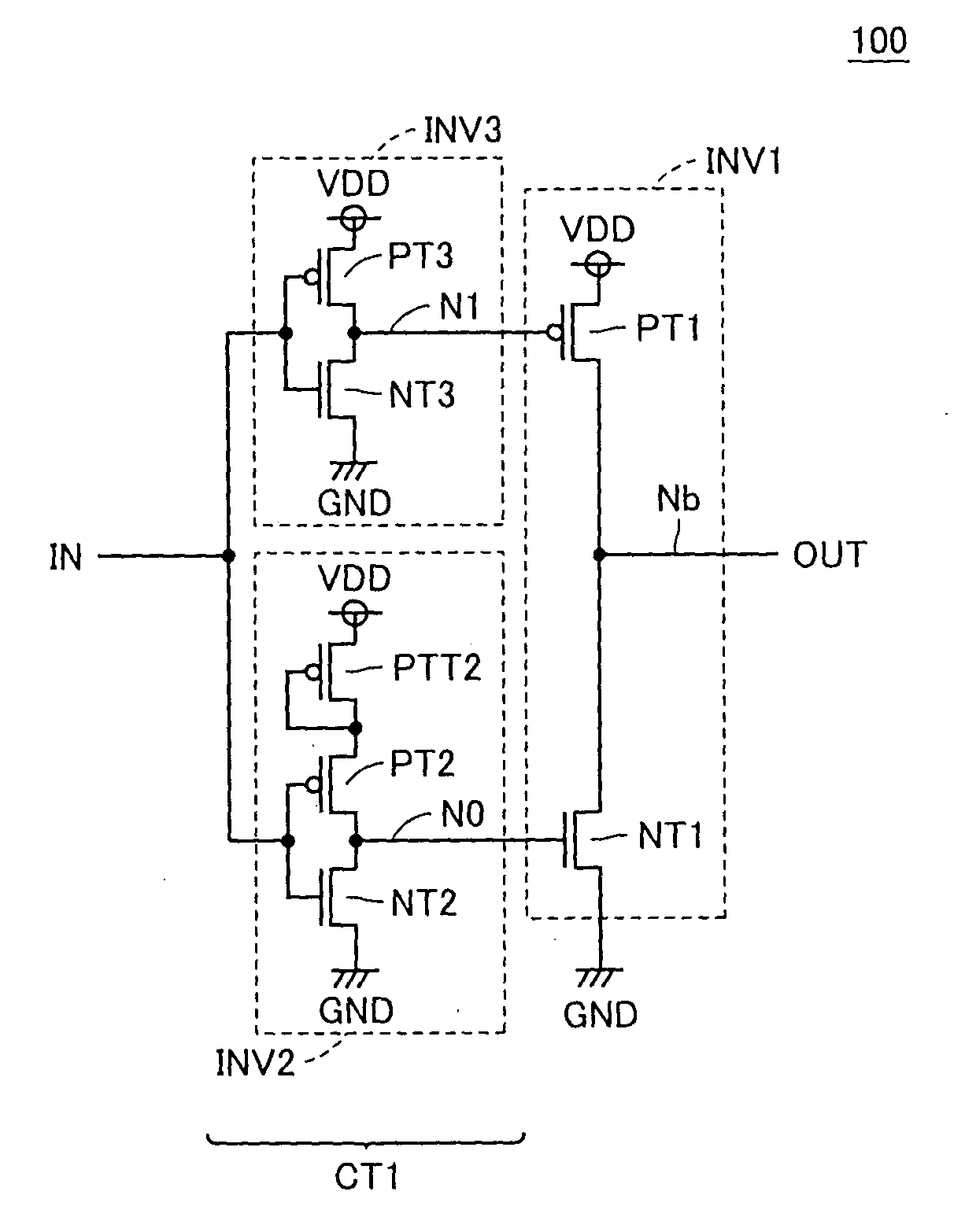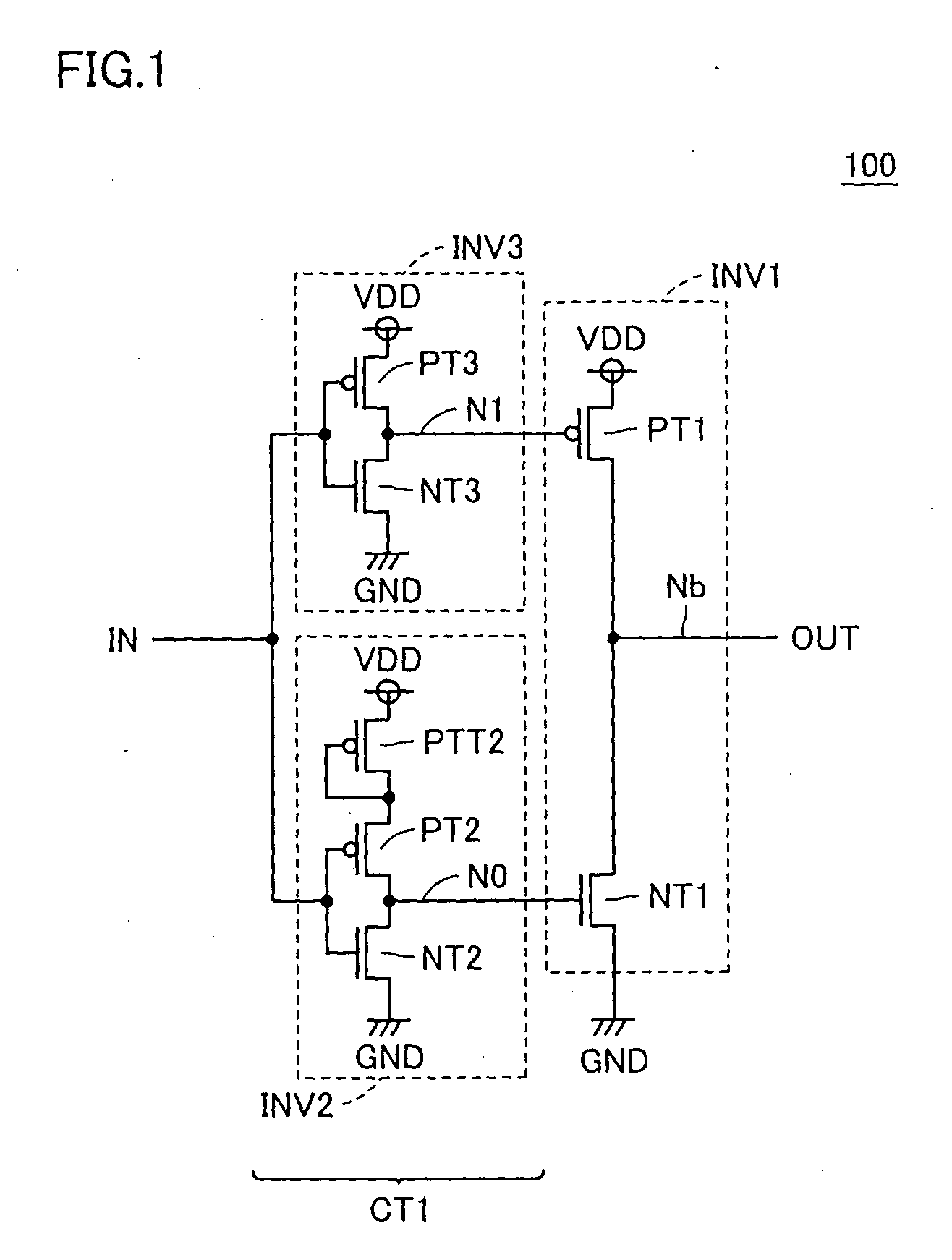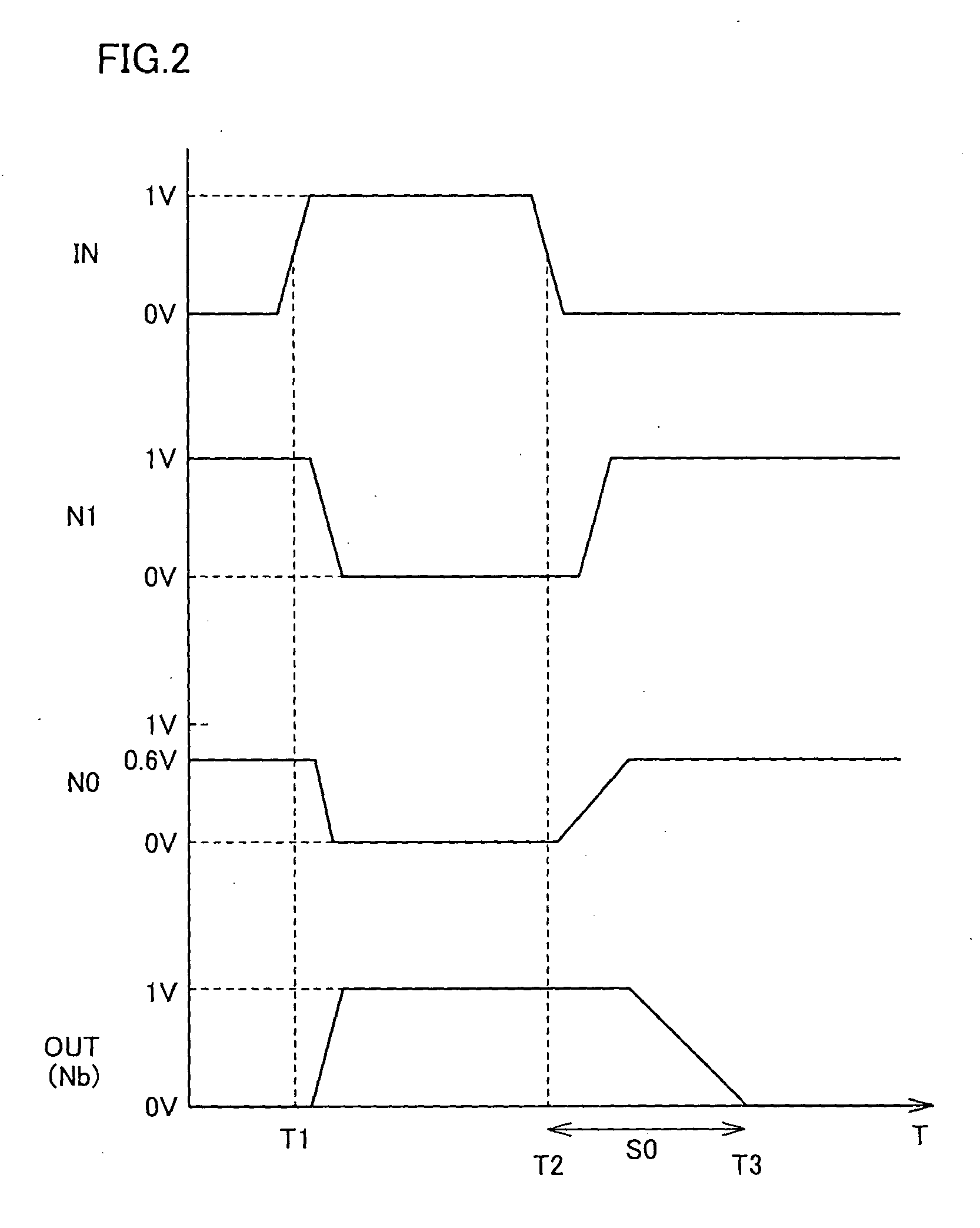Semiconductor device having CMOS driver circuit
- Summary
- Abstract
- Description
- Claims
- Application Information
AI Technical Summary
Benefits of technology
Problems solved by technology
Method used
Image
Examples
first embodiment
[0072] Referring to FIG. 1, a driver circuit 100 according to a first embodiment of the present invention includes inverters INV1 to INV3. Driver circuit 100 differs from a conventional driver circuit in that inverter INV0 described with reference to FIG. 18 is eliminated and two inverter stages receiving input signal IN are provided. Specifically, inverter INV2 outputs its output result to a node N0 connected to the gate of transistor NT1 of inverter INV1 in response to input signal IN. Inverter INV3 outputs its output result to node N1 connected to the gate of transistor PT1 of inverter INV1 in response to input signal IN. Inverters INV2 and INV3 constitute a control circuit CT1 which controls the voltage levels of nodes N0 and N1.
[0073] Inverter INV2 includes transistors PTT2, PT2 and NT2. It is assumed herein that transistors PTT2 and PT2 are P-channel transistors. In addition, it is assumed herein that transistor NT2 is an N-channel transistor. In transistor PTT2, a source sid...
second embodiment
[0085] Referring to FIG. 4, a driver circuit 200 according to a second embodiment of the present invention differs from driver circuit 100 shown in FIG. 1 in that a timing circuit 10 which adjusts the voltage level of an internal node for a predetermined period is further provided. Since the other constituent elements of driver circuit 200 are the same as those of driver circuit 100 in the first embodiment, they will not be described herein repeatedly. In addition, inverters INV2 and INV3 and timing circuit 10 constitute a control circuit CT2 which controls the voltage levels of nodes N0 and N1.
[0086] Timing circuit 10 includes transistors 1 and 2 and an inverter 3. It is assumed herein that transistors 1 and 2 are P-channel MOS transistors. Transistors 1 and 2 are connected in series between power supply voltage VDD and node N0 and the gate of transistor 1 receives the input of input signal IN. The gate of transistor 2 receives the input of the inverted signal of output signal OUT...
third embodiment
[0103] Referring to FIG. 8, a driver circuit 300 according to a third embodiment of the present invention differs from the driver circuit according to the second embodiment described with reference to FIG. 4 in that timing circuit 10 is replaced by a timing circuit 40. Timing circuit 40 includes a transistor 41 and an inverter 42. It is assumed herein that transistor 41 is a P-channel MOS transistor as one example. Transistor 41 is arranged between nodes N1 and N0 and the gate thereof receives the input of the inverted signal of output signal OUT through inverter 42. In addition, inverters INV2 and INV3 and timing circuit 40 constitute a control circuit CT3 which controls the voltage levels of nodes N0 and N1.
[0104] Timing circuit 40, similarly to timing circuit 20, temporarily, electrically couples power supply voltage VDD to node N0 when transistor NT1 is turned on. Specifically, if output signal OUT is 1 V (“H” level), transistor 41 is turned on and nodes N1 and N0 are electrica...
PUM
 Login to View More
Login to View More Abstract
Description
Claims
Application Information
 Login to View More
Login to View More - R&D
- Intellectual Property
- Life Sciences
- Materials
- Tech Scout
- Unparalleled Data Quality
- Higher Quality Content
- 60% Fewer Hallucinations
Browse by: Latest US Patents, China's latest patents, Technical Efficacy Thesaurus, Application Domain, Technology Topic, Popular Technical Reports.
© 2025 PatSnap. All rights reserved.Legal|Privacy policy|Modern Slavery Act Transparency Statement|Sitemap|About US| Contact US: help@patsnap.com



